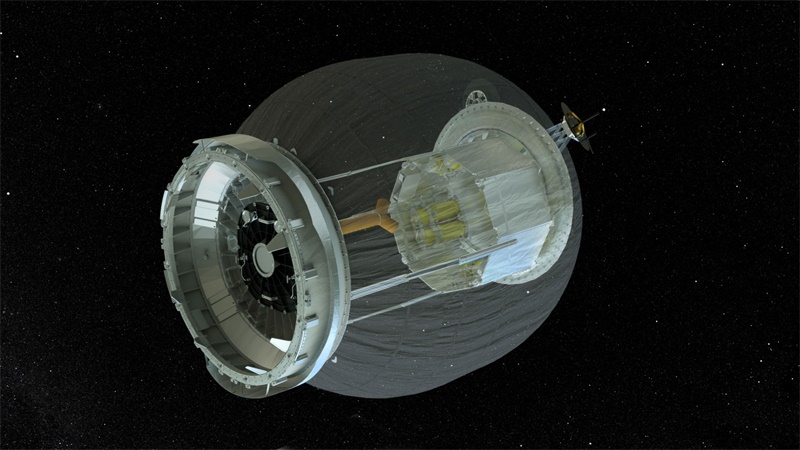- Home
- Science
- Science News
- Expandable Space Habitat Fails to Inflate in Nasa's First Test
Expandable Space Habitat Fails to Inflate in Nasa's First Test

Station crew member Jeff Williams spent more than two hours opening a valve to allow spurts of air to inflate the 3,100-pound (1,400 kg) module, the first expandable habitat to be tested with astronauts in space.
But the Bigelow Expandable Activity Module, or Beam, failed to unfurl as expected, mission commentator Dan Huot said during a Nasa TV broadcast.
"We'll hope for better luck tomorrow," astronaut Jessica Meir radioed to Williams from Mission Control in Houston.
The prototype habitat, which was flown to the station last month aboard a SpaceX Dragon cargo ship, is made of impact-resistant, Kevlar-like materials and flexible layers of fabric.
Nasa is interested in using expandable habitats as living quarters for crew members in its future plans for three-year trips to and from Mars. The lightweight habitats could save millions of dollars in launch costs compared with metal modules. They may also offer better radiation protection for astronauts.
Beam was designed and built by Bigelow Aerospace, a Las Vegas-based firm owned and operated by billionaire entrepreneur Robert Bigelow.
Now, engineers from Nasa and Bigelow are studying why the habitat failed to expand as planned. They may resume the operation on Friday, Huot said during the Nasa broadcast.
Nasa had hoped to expand Beam using spurts of air from the station, before pressurizing it to inflate to the size of a small bedroom, a 10-fold increase in volume.
Nasa plans to keep Beam attached to the station, a $100 billion (roughly Rs. 6,70,681 crores) research laboratory that flies about 250 miles (400 km) above Earth, for two years to see how it fares in the harsh environment of space.
© Thomson Reuters 2016
For the latest tech news and reviews, follow Gadgets 360 on X, Facebook, WhatsApp, Threads and Google News. For the latest videos on gadgets and tech, subscribe to our YouTube channel. If you want to know everything about top influencers, follow our in-house Who'sThat360 on Instagram and YouTube.
Related Stories
- Samsung Galaxy Unpacked 2025
- ChatGPT
- Redmi Note 14 Pro+
- iPhone 16
- Apple Vision Pro
- Oneplus 12
- OnePlus Nord CE 3 Lite 5G
- iPhone 13
- Xiaomi 14 Pro
- Oppo Find N3
- Tecno Spark Go (2023)
- Realme V30
- Best Phones Under 25000
- Samsung Galaxy S24 Series
- Cryptocurrency
- iQoo 12
- Samsung Galaxy S24 Ultra
- Giottus
- Samsung Galaxy Z Flip 5
- Apple 'Scary Fast'
- Housefull 5
- GoPro Hero 12 Black Review
- Invincible Season 2
- JioGlass
- HD Ready TV
- Laptop Under 50000
- Smartwatch Under 10000
- Latest Mobile Phones
- Compare Phones
- Moto G15 Power
- Moto G15
- Realme 14x 5G
- Poco M7 Pro 5G
- Poco C75 5G
- Vivo Y300 (China)
- HMD Arc
- Lava Blaze Duo 5G
- Asus Zenbook S 14
- MacBook Pro 16-inch (M4 Max, 2024)
- Honor Pad V9
- Tecno Megapad 11
- Redmi Watch 5
- Huawei Watch Ultimate Design
- Sony 65 Inches Ultra HD (4K) LED Smart TV (KD-65X74L)
- TCL 55 Inches Ultra HD (4K) LED Smart TV (55C61B)
- Sony PlayStation 5 Pro
- Sony PlayStation 5 Slim Digital Edition
- Blue Star 1.5 Ton 3 Star Inverter Split AC (IC318DNUHC)
- Blue Star 1.5 Ton 3 Star Inverter Split AC (IA318VKU)

















